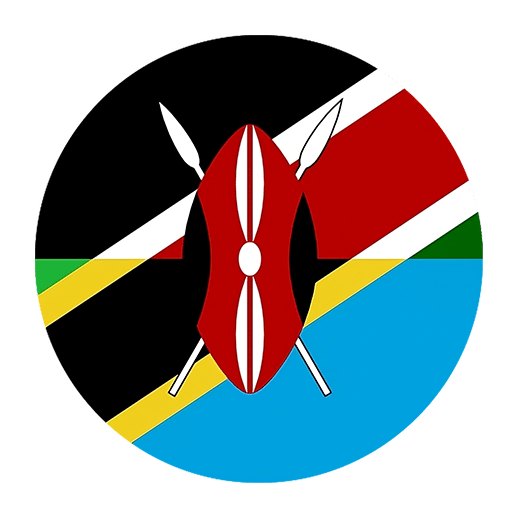Swahili, also known as Kiswahili, is a Bantu language widely spoken in East Africa, particularly in Kenya, Tanzania, Uganda, and the Democratic Republic of Congo. Its simplicity and regularity make it an appealing language for learners. One of the fundamental aspects of understanding any language is its morphology—the study of the structure and formation of words. In Swahili, morphology plays a crucial role in meaning and communication. This article will delve into the essential aspects of Swahili morphology, providing you with a solid foundation to grasp the intricacies of this fascinating language.
Swahili Noun Classes
Swahili nouns are classified into noun classes, which are somewhat akin to grammatical genders in languages like French or Spanish. Each noun class has a specific prefix that appears on nouns, adjectives, and verbs associated with those nouns. Understanding these classes is essential because they affect the entire sentence structure.
Common Noun Classes
1. **M-Wa Class**: This class includes most human beings and some animals.
– Singular: “mtoto” (child)
– Plural: “watoto” (children)
2. **Ki-Vi Class**: This class often includes tools, fruits, and other items.
– Singular: “kitabu” (book)
– Plural: “vitabu” (books)
3. **N Class**: This class includes many animals and some inanimate objects. It does not change from singular to plural.
– Singular and Plural: “ndizi” (banana/bananas)
4. **M-Mi Class**: This class includes many plants, trees, and other natural objects.
– Singular: “mti” (tree)
– Plural: “miti” (trees)
5. **Ji-Ma Class**: This class includes many inanimate objects and some abstract concepts.
– Singular: “jina” (name)
– Plural: “majina” (names)
Using Noun Classes
Noun classes impact not only the nouns but also the adjectives, verbs, and other elements associated with the noun. For example, if you want to say “big book” in Swahili, you would say “kitabu kikubwa,” where “kikubwa” (big) matches the “ki” prefix of “kitabu” (book). Similarly, “big books” would be “vitabu vikubwa,” with “vikubwa” matching the “vi” prefix of “vitabu.”
Verb Conjugation
Swahili verbs are conjugated to reflect tense, mood, aspect, and sometimes the subject. They follow a regular pattern, making them relatively straightforward once you understand the basics.
Verb Structure
A typical Swahili verb can be broken down into several components:
1. **Subject Prefix**: Indicates who is performing the action.
2. **Tense Marker**: Indicates when the action is taking place.
3. **Verb Root**: The base form of the verb.
4. **Object Infix**: Indicates the object of the verb (optional).
5. **Suffix**: Often used for negation or other grammatical nuances.
For example, in the sentence “Ninakula” (I am eating), the verb structure is:
– **Ni-** (Subject Prefix for “I”)
– **-na-** (Present Tense Marker)
– **-kula** (Verb Root for “eat”)
Subject Prefixes
Here are some common subject prefixes:
– **Ni-** (I)
– **U-** (You singular)
– **A-** (He/She)
– **Tu-** (We)
– **M-** (You plural)
– **Wa-** (They)
Tense Markers
Swahili uses specific markers to denote different tenses:
– **Present Tense**: **-na-**
– “Ninakula” (I am eating)
– **Past Tense**: **-li-**
– “Nilikula” (I ate)
– **Future Tense**: **-ta-**
– “Nitakula” (I will eat)
– **Perfect Tense**: **-me-**
– “Nimekula” (I have eaten)
– **Habitual Tense**: **-hu-**
– “Hukula” (He/She usually eats)
Negation
Negating a verb in Swahili involves changing both the subject prefix and adding a suffix:
– **Present Tense**: **-a** changes to **-i**
– “Sikulala” (I did not sleep)
– **Past Tense**: **-li-** changes to **-ku-**
– “Sikula” (I did not eat)
– **Future Tense**: **-ta-** changes to **-ta-** with “si” prefix
– “Sitakula” (I will not eat)
Adjectives and Agreement
Adjectives in Swahili must agree with the noun they describe in terms of class and number. This agreement is achieved through the use of prefixes that correspond to the noun class.
Adjective Prefixes
Here are some examples of how adjectives agree with different noun classes:
– **M-Wa Class**:
– Singular: “mtoto mzuri” (good child)
– Plural: “watoto wazuri” (good children)
– **Ki-Vi Class**:
– Singular: “kitabu kikubwa” (big book)
– Plural: “vitabu vikubwa” (big books)
– **N Class**:
– Singular/Plural: “ndizi nzuri” (good banana/bananas)
Possessive Pronouns
Possessive pronouns in Swahili also need to agree with the noun class. Here’s how they change based on the noun class:
Possessive Pronouns Examples
1. **M-Wa Class**:
– Singular: “mtoto wangu” (my child)
– Plural: “watoto wangu” (my children)
2. **Ki-Vi Class**:
– Singular: “kitabu changu” (my book)
– Plural: “vitabu vyangu” (my books)
3. **N Class**:
– Singular/Plural: “ndizi yangu” (my banana/bananas)
4. **M-Mi Class**:
– Singular: “mti wangu” (my tree)
– Plural: “miti yangu” (my trees)
5. **Ji-Ma Class**:
– Singular: “jina langu” (my name)
– Plural: “majina yangu” (my names)
Demonstratives
Demonstratives in Swahili also adhere to noun class agreement. They are used to point out specific objects and must match the noun class in both singular and plural forms.
Demonstratives Examples
1. **M-Wa Class**:
– Singular: “mtoto huyu” (this child)
– Plural: “watoto hawa” (these children)
2. **Ki-Vi Class**:
– Singular: “kitabu hiki” (this book)
– Plural: “vitabu hivi” (these books)
3. **N Class**:
– Singular/Plural: “ndizi hizi” (this/these bananas)
4. **M-Mi Class**:
– Singular: “mti huu” (this tree)
– Plural: “miti hii” (these trees)
5. **Ji-Ma Class**:
– Singular: “jina hili” (this name)
– Plural: “majina haya” (these names)
Conclusion
Understanding Swahili morphology is essential for mastering the language. By familiarizing yourself with noun classes, verb conjugation, adjective agreement, possessive pronouns, and demonstratives, you will gain a robust foundation in Swahili. This knowledge will not only help you construct grammatically correct sentences but also enhance your ability to comprehend and communicate effectively in Swahili.
Remember, practice is key when learning a new language. Engage with native speakers, read Swahili texts, and immerse yourself in the language as much as possible. With consistent effort and a solid understanding of Swahili morphology, you will find yourself becoming more proficient and confident in your Swahili language journey. Happy learning!

